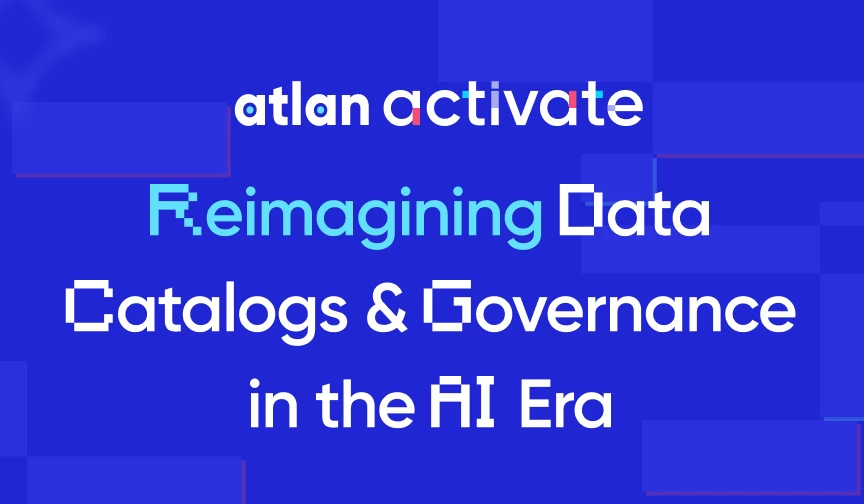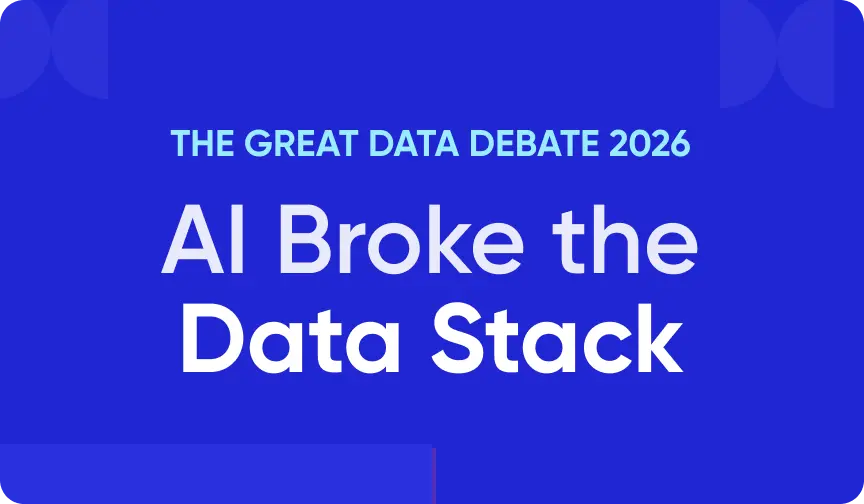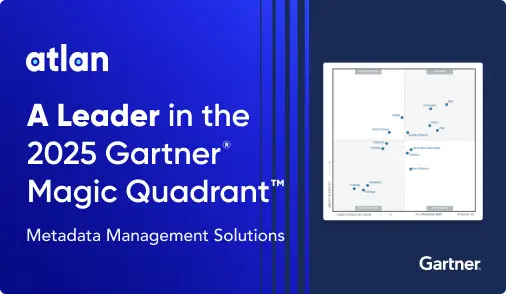Financial Data Compliance Software: What Qualities Matter in 2025

Last Updated on: April 25th, 2025 | 10 min read
Unlock Your Data's Potential With Atlan

Financial data compliance software helps financial institutions establish, enforce, and monitor compliance at scale—across jurisdictions, systems, and teams.
This brings consistency, automation, and auditability to compliance processes, helping financial enterprises keep up with fast-changing regulations, safeguard sensitive data, and build a connected data ecosystem.
In this article, we’ll explore:
- What financial data compliance software does
- Why it’s becoming essential in 2025 and beyond
- Common data compliance challenges
- The core capabilities that matter most in a modern solution
- And why a unified metadata control plane is key to scaling compliance efforts
Table of Contents
Permalink to “Table of Contents”- What is financial data compliance software? An overview
- Why do you need financial data compliance software in 2025?
- What are the benefits of using financial data compliance software?
- How to pick the right financial data compliance software for your enterprise
- Bottom line
- Financial data compliance software: Frequently asked questions (FAQs)
What is financial data compliance software? An overview.
Permalink to “What is financial data compliance software? An overview.”Financial data compliance software ensures that regulatory requirements are consistently applied to financial data throughout its lifecycle. They serve as the operational backbone for turning complex regulations into repeatable, auditable processes.
Today’s financial data compliance platforms go well beyond generating audit reports or flagging violations. They track end-to-end data lineage, enforce granular access rules, and provide real-time visibility into data usage.
When done well, they speed up the decision-making process while ensuring the company remains compliant and protected from risk.
Why do you need financial data compliance software in 2025?
Permalink to “Why do you need financial data compliance software in 2025?”Regulations now move faster than most teams can respond. In January 2025, DORA came into effect in the EU, introducing rules to ensure that financial firms can prevent, respond to, and recover from IT disruptions.
Meanwhile, in the US, the SEC proposed new reporting rules for securities lending to increase transparency. In the EU, updates to the GDPR such as stricter cross-border data transfer rules and enhanced enforcement powers have further complicated financial data rules.
Data volume, velocity, and complexity is also expanding. Large banks manage petabytes of data spread across fragmented, often disconnected systems. It’s getting harder to know where sensitive data lives, whether policies are applied, or if teams are staying compliant.
Top challenges in financial data compliance
Permalink to “Top challenges in financial data compliance”Here are some of the key challenges banks still face in relation to compliance and regulations:
- Data complexity and disconnected systems: Financial organizations deal with thousands of siloed systems, making it difficult to track, unify, or govern sensitive data across lines of business. Austin Capital Bank initially stored their transactional data in AWS and PostgreSQL databases, which were not well-connected, making cross-database querying difficult.
- Constantly changing regulations: Constant regulatory updates require automation to ensure consistent policy enforcement. GRC 20/20 estimated that organizations faced an average of 257 regulatory change events every business day in 2020, creating what they describe as a "tsunami of regulatory change”.
- Scalability issues: Compliance systems that don’t scale with growing data volumes or new product lines become a bottleneck. At Tide, compliance became harder as their tech stack expanded, new products were launched, and customer volume increased. GDPR compliance—specifically the Right to Erasure—became cumbersome and tough to scale.
- Enabling cross-border data flows: Financial institutions transferring data across borders must comply with both local and international laws. For instance, in May 2023, Meta Ireland was fined €1.2 billion for violating GDPR by sending personal data to the U.S. without proper protections.
Financial data compliance software helps by making this easier to manage — automating rules, showing what’s happening across systems, and reducing the manual effort. Let’s look at the top benefits.
What are the benefits of using financial data compliance software?
Permalink to “What are the benefits of using financial data compliance software?”The biggest benefits of using financial data compliance software include:
- Unified and real-time policy management to eliminate silos: Set policies, and then enforce, revise, and manage them at scale across cloud platforms, regions, and business units—without siloed data ecosystems or manual overhead. Revisiting the case of Austin Capital Bank, they implemented Snowflake for centralized access, while Atlan added a shared layer for governance and collaboration. This setup helped them break silos, automate their processes, and establish better control and context across systems.
- End-to-end data lineage to improve traceability: Understand exactly how financial data moves, transforms, and is used across systems. This improves audit preparedness, supports regulatory responses, and builds confidence in reporting accuracy.
- Streamlined and well-documented audits to reduce chaos: Automatically log data access, usage, and policy changes—ensuring detailed, verifiable audit trails are always available and reducing last-minute chaos.
- Stronger access controls to preserve data privacy and security: Apply granular, role-based access policies to ensure that only the right people see the right data at the right time.
- Scalability, adaptability, and efficiency boost with automation: Handle growing volumes of complex data and evolving regulations without increasing manual workload by automating repetitive tasks like tagging, classification, and incident flagging. This frees up your teams to focus on higher-value work. It also reduces human error and non-compliance risks. Revisiting the case of Tide, they set up automated, rule-based playbooks to ensure GDPR compliance at scale. These repeatable and scalable workflows helped Tide cut a 50-day manual workflow down to just hours—embedding privacy checks directly into automated processes.
Strengthening compliance at scale: North’s approach to data governance
Permalink to “Strengthening compliance at scale: North’s approach to data governance”North, a leading payments provider handling over $100 billion annually, faced challenges managing a vast data estate of 225,000 assets across 20+ brands. Ensuring data security and compliance amidst complex regulations was a major hurdle.
Manual efforts made it hard to enforce compliance standards and keep pace with regulatory change. To address this, North integrated Atlan (for data governance) with Snowflake (enterprise data lake) and Sigma (BI tool), achieving:
- 700% increase in tagged assets after implementing automated data tagging and classification, making data easier to classify and govern.
- Sigma adoption grew by 200%, with more business users using self-serve analytics due to improved data organization.
- $1.4 million projected annual efficiency gains by cutting manual work and speeding up data discovery.
“By the time I added a filter, Atlan scanned our 225,000 assets and almost immediately found 45 matches. As I changed the filters to add new ones, it constantly updated to show me how many assets meet that criteria. Hours of manual research and testing, before Atlan, was converted into a couple seconds.” - Daniel Dowdy, VP of Data Analytics & Governance, on scaling data governance and compliance for 225,000+ assets
How to pick the right financial data compliance software for your enterprise
Permalink to “How to pick the right financial data compliance software for your enterprise”As data grows in complexity and volume, traditional approaches to governance struggle to scale. We’ve explored how fragmented tools, disconnected workflows, and siloed data make it difficult to enforce policies consistently or understand how data flows across systems.
This is where a unified control plane for metadata becomes essential. A unified control plane for metadata offers a centralized, real-time layer of control and visibility across all systems. It connects metadata from different systems—like cloud storage, BI tools, and compliance platforms—to provide real-time visibility into how data is stored, accessed, and used.
As a result, you set policies from one place and enforce them everywhere. The policies move with the data as it flows across tools, regions, and teams—ensuring ongoing compliance. This sets the stage for automated, audit-ready policy compliance and trust at scale.
Let’s look at the core capabilities your financial data compliance software should have to support this.
What capabilities should you look for?
Permalink to “What capabilities should you look for?”To enable end-to-end governance and compliance, modern financial data platforms need the following core capabilities:
- A unified center for policy setting and enforcement: Define, manage, and apply granular access, quality, retention, and compliance policies at scale. Automate enforcement, track policy coverage from a single place, and get real-time non-compliance alerts.
- Automation and AI for scale: Use automation and AI to accelerate governance tasks—like drafting policies or bulk-editing metadata. Automated workflows and AI-assisted suggestions reduce manual effort, human error, and scale compliance.
- Active metadata management: Continuously collect, enrich, and sync metadata across systems—enabling real-time discovery, classification, and policy automation.
- Automated data lineage: Choose a platform with active, cross-system, column-level lineage to track how data flows across your estate—from ingestion to transformation to consumption. This enables root cause and impact analysis, while automating metadata propagation to downstream assets.
- Personalized data marketplace for diverse users: Pick a platform with a personalized, collaborative UI that supports multiple clouds, evolving tools, and diverse business functions and personas.
- Role-based access controls (RBAC): Set up precise access rules based on user roles, business domains, or data sensitivity—ensuring only the right users can access specific data.
- Embedded collaboration: Look for a platform that brings metadata and governance context into everyday tools like Slack, Jira, Tableau, or Snowflake – with a browser extension, for instance. This enables faster decisions, reduces context-switching, and ensures AI-readiness by embedding governance where data teams already work.
- Audit trails and compliance monitoring: Maintain detailed logs of access, transformations, and policy changes in real-time. Ensure you’re always ready for audits, breach reports, or regulatory reviews.
- Open-by-default and endless extensibility: Offers open APIs and an extensible architecture so your teams can build custom workflows and integrate governance seamlessly across your data and tech stack, now and in the future. This helps adapt to change – be it AI, new regulations, or evolving business needs.
Nasdaq’s use of Atlan’s active metadata platform showcases how financial institutions can simplify data governance and compliance. By centralizing access, policies, and lineage, it ensured real-time policy enforcement and helped Nasdaq cut their data discovery time by a third and kept up with changing regulations.
Bottom line
Permalink to “Bottom line”As financial regulations evolve and data environments grow more complex, scalable, intelligent governance can be a strategic differentiator.
Financial data compliance software—especially when powered by a unified metadata control plane—equips institutions to stay audit-ready, reduce risk, and foster trust across the data ecosystem. This lays the foundation for secure, compliant, and future-ready operations.
Financial data compliance software: Frequently asked questions (FAQs)
Permalink to “Financial data compliance software: Frequently asked questions (FAQs)”1. What is financial data compliance software?
Permalink to “1. What is financial data compliance software?”Financial data compliance software helps financial institutions set, enforce, and monitor policies for regulatory compliance across their data systems. It automates policy enforcement, provides audit trails, and ensures compliance with evolving data regulations like DORA, GDPR, and SEC rules.
2. Why is financial data compliance important in 2025?
Permalink to “2. Why is financial data compliance important in 2025?”With regulations changing rapidly—like the EU’s DORA and GDPR updates or SEC transparency mandates—manual compliance is no longer sustainable. Financial data compliance software ensures real-time enforcement, reduces risk, and keeps institutions audit-ready across jurisdictions.
3. What challenges do banks face in financial data compliance?
Permalink to “3. What challenges do banks face in financial data compliance?”Top challenges include siloed systems, increasing regulatory complexity, lack of scalable governance tools, and difficulties in managing cross-border data transfers. These lead to operational inefficiencies, data privacy risks, and audit delays.
4. How do financial institutions benefit from financial data compliance software?
Permalink to “4. How do financial institutions benefit from financial data compliance software?”Automation reduces manual effort, speeds up audits, improves accuracy, and scales compliance as data volumes grow. Teams can focus on strategy and risk mitigation rather than repetitive rule checks.
5. Can financial compliance software support cross-border data regulations?
Permalink to “5. Can financial compliance software support cross-border data regulations?”Yes. Modern data governance platforms can drive financial data compliance by tracking data flows, enforcing region-specific rules, and maintaining detailed logs. This helps institutions comply with global frameworks like GDPR, DORA, and other jurisdictional data transfer laws.
6. What features should financial data compliance software include?
Permalink to “6. What features should financial data compliance software include?”Key features include active metadata management, embedded collaboration, unified transparency center, automated policy compliance, cross-system lineage tracking, and AI-augmented workflows. A metadata control plane helps tie it all together.
7. How does a metadata control plane help with compliance?
Permalink to “7. How does a metadata control plane help with compliance?”A metadata control plane integrates data from across your stack—enabling real-time visibility, centralized policy enforcement, and automation. It ensures governance follows your data wherever it goes, supporting traceability and auditability at scale.
Share this article
Atlan is the next-generation platform for data and AI governance. It is a control plane that stitches together a business's disparate data infrastructure, cataloging and enriching data with business context and security.
Financial data compliance software: Related reads
Permalink to “Financial data compliance software: Related reads”- What is Data Governance? Its Importance, Principles & How to Get Started?
- Data Governance and Compliance: An Act of Checks & Balances
- Data Governance and GDPR: A Comprehensive Guide to Achieving Regulatory Compliance
- Data Compliance Management in 2025
- Automated Data Governance: How Does It Help You Manage Access, Security & More at Scale?
- Enterprise Data Governance Basics, Strategy, Key Challenges, Benefits & Best Practices
- Data Governance in Banking: Benefits, Challenges, Capabilities
- Financial Data Governance: Strategies, Trends, Best Practices
- BCBS 239 Data Governance: What Banks Need to Know in 2025
- Data Governance & Business Intelligence: Why Their Integration Matters and How It is Crucial for Business Success?
- Unified Control Plane for Data: The Future of Data Cataloging





















